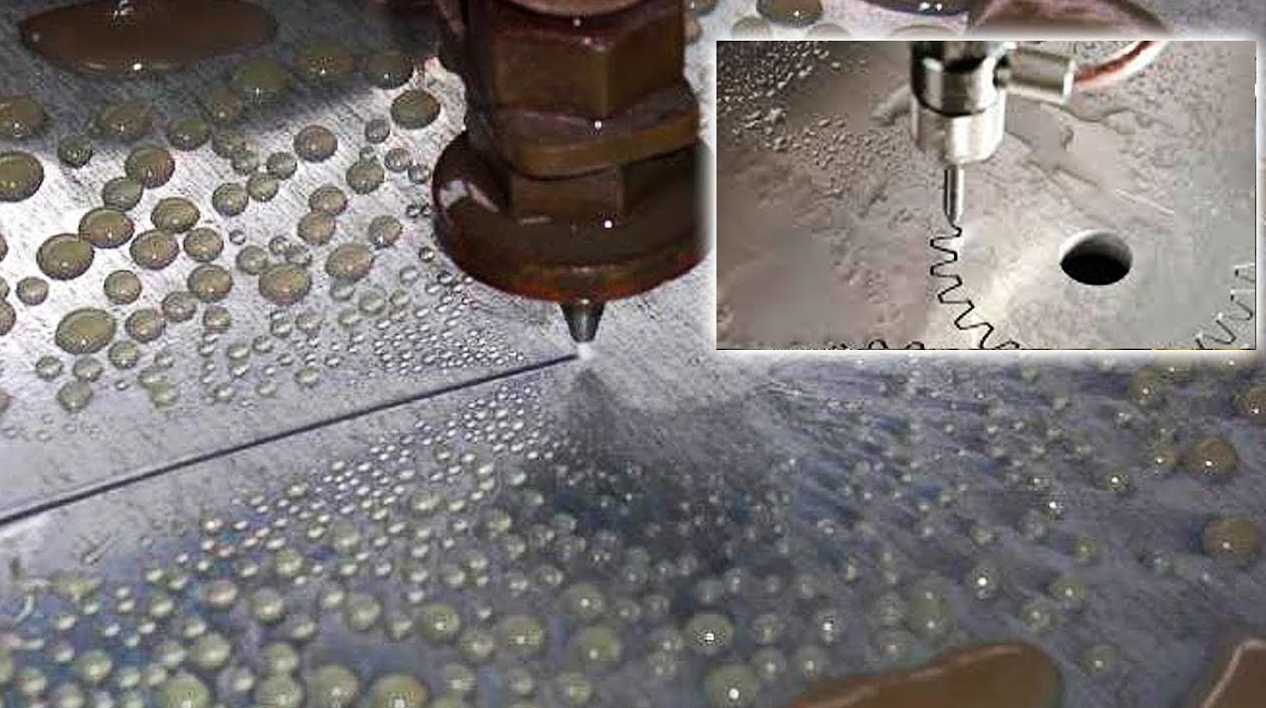A waterjet is a tool used in machine shops to cut metal parts with a (very) high-pressure stream of water. As amazing as it sounds, if you get water flowing fast enough, it can actually cut metal. By Jessminder Kaur
The key to cutting metal with water is to keep the spray coherent. Waterjets are able to cut because the spray is channelled through a very narrow jewelled nozzle at very high pressure so the spray remains coherent. A waterjet never gets dull and it cannot overheat, unlike metal cutters.
A waterjet has the ability to cut through a “sandwich” of various materials with up to four-inch thickness. This dust-free, odourless and relatively heat-free process can also slice through something as thin as five thousandths of an inch. The tiny jet stream allows the first cut to also be the final finished surface. This single cutting process economises on material costs and machining costs.
Waterjet Basics
Pure vs. Abrasive Waterjet
In the broadest sense, the term ‘waterjet’ encompasses any cutting tool that utilises a high-pressure stream of water. More specifically, waterjets can be divided into pure and abrasive subcategories.
Pure waterjets are the original form of the technology and work exactly as their name implies, using a stream of pressurised water to cut. They are used for softer materials, including gasket, paper, plastic and carpet.
With pure waterjet, however, its benefits are limited to cutting soft and/or thin materials such as foam, fabric, cardboard, foil, rubber and wood.
Abrasive jet technology, on the other hand, extends the advantages of pure waterjet to cutting harder materials like metal, wood and glass, ceramic and stone. Waterjet abrasives are typically made of garnet, with grit size ranging from 50 to 220 mesh, though 80 is the most common.
Many waterjet machines are capable of switching from pure waterjet cutting to abrasive waterjet cutting, making them uniquely versatile.
History Of The Waterjet
In the 1950s, forestry engineer, Dr. Norman Franz, experimented with an early form of waterjet cutter for lumber cutting. The technology, however, didn’t progress remarkably until the 1970s. Today, the waterjet is unequalled in many aspects of cutting and has altered the manner in which many products are manufactured. Many types of waterjets exist today, including plain water jets, abrasive water jets, percussive water jets, cavitation jets and hybrid jets.
Some Limitations Of Waterjet Cutting
Blind Cuts
Waterjet cutting is primarily a tool for cutting all the way through a piece of material and is rarely used to cut to a certain depth as this is difficult and often inaccurate. However this process has been used for engravings where the depth isn’t very important.
Hole Size
With a stream width of 0.04 inches, it is often assumed that is the smallest hole that can be accurately made, but this is not the case. The waterjet must first break through the material before cutting along the cut line. In this process, called piercing, the machine sends a powerful blast of water and abrasive at the material surface in order to create the initial hole.
This initial hole is fairly rough and the cut only becomes smooth once it is pierced. It is for this very reason that it is advised that a hole be two times that of the waterjet in order to get a smooth and accurate hole, so in most cases it’s not recommended to go below a diameter of 0.1 inches.
How A Waterjet Cutting Head Works
- Pressurised water is delivered to a cutting head by either high pressure tubing or hose. At the cutting head, the high pressure water is applied to an orifice with a typical diameter ranging from 0.005” to 0.020”. This orifice is made in a diamond or sapphire, to resist abrasion of the high pressure water. The orifice defines and creates the water stream which cuts through the material.
- After the water stream exits the orifice, an abrasive can be added to the water stream, to allow it to cut hard materials. When cutting hard materials, including steel, stainless steel, aluminium, stone, wood, etc., it is the abrasive that does the actual cutting using a mechanical sawing type action.
The abrasive is usually crushed garnet, the same type of material often used as the abrasive on sand paper. Some special applications make use of other abrasive types.
